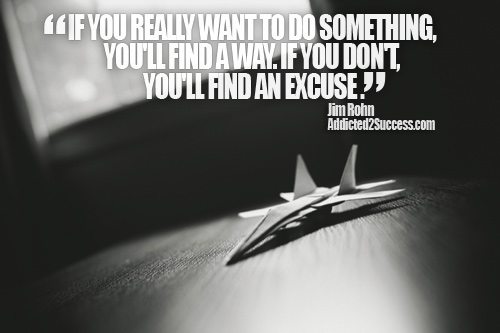Entrepreneurs
6 Common Stages You Will Go Through When Becoming An Entrepreneur
Have you crossed that bridge yet? The one where you walk over to the entrepreneurial side (we’ve got cookies!)?
Or are you still looking at the wobbliness of the bridge itself? And at how crazy wild that river below is…And at all the alligators there waiting to get you…And you are still not risking it even though you can see the unicorns prance in fields of 4-leaved clovers and double rainbows stretch as far as the eye can see on the other side?
Ai, that sucks! But…it’s perfectly normal to be afraid of that giant step!
In fact, there are 6 stages that most people taking the leap from a steady job to entrepreneurialism go through:
Stage 1: Where you experience a nagging, gnawing knowing of something you’d rather didn’t
This is what happened to me; I was building the career I had always set out for myself. A career that included regular promotions, valuable lessons, great peers to work with and the accompanying great pay and car.
But, I also felt like I was continuously fighting political windmills and had to drag myself to work everyday even though on the outside everything looked just fine and dandy.
That’s when it started to dawn on me that this type of career was making me unhappy. But as it was all I knew and had ever wanted, I didn’t do anything about it for a long time and ended up (almost) burning myself out.
“You cannot swim for new horizons until you have courage to lose sight of the shore” – William Faulkner
Stage 2: Where you’re afraid of the void
But this was my life. This was all built on the studies I had done. This was what my friends were doing. What was the alternative?
Slowly it came to me that freelancing might give me the freedom I so longed for (I know, not ‘proper’ entrepreneuring perhaps but still…big change!). But instead of already smelling the freedom, all I saw was a big black whole of nothingness (mainly money) coming up ahead and all I felt was a big swirling fear in my stomach.
Stage 3: Where you come up with a million excuses to NOT do it
Even though rationally I knew I could do this, and even though I really really wanted to do this, I still had a ton of reasons why this was such a bad idea:
- I believed that deep down I wasn’t good at my job (hellooo impostor syndrome!).
- I believed that because I have a non-traditional way of looking at a business, no company would ever want to hire me.
- I believed that I had to do traditional sales stuff to get myself hired and I was totally allergic to that!
Belief systems…sigh…so useless!
“The true entrepreneur is a doer, not a dreamer” – Nolan Bushnell
Stage 4: When it becomes undeniably clear that things need to change
So after a terribly long stint of being unhappy in my work, and therefore my life, I was ‘lucky’ enough to fall into a corporate reorganisation and that management had decided something that went way beyond what I felt was acceptable.
Through this, I finally got to that point where I could say to myself: NO MORE!
Ah, how liberating it felt to say NO to that what I didn’t think was acceptable.
Really, without that, I couldn’t have done it and finding my ‘NO’ is still pretty much the foundation from which I work and live.
Because when your NO is clear…everything else simply becomes opportunity!
Stage 5: Where you can finally see the puzzle pieces come together
It was a good friend and mentor of mine who helped me figure this out. I was complaining on how I would definitely go bankrupt and this was his reply:
Him: “Imagine a worst case scenario where you go bankrupt and have to give all your possessions to the bank: would that kill you?”
Me: “No, it’s all Ikea, Zara and thrifted anyway…”
Him: “Okay, so in that scenario, would you be able to walk the 20 kilometres from your place to mine?”
Me: “Sure!”
Him: “Would you be willing to work in my restaurant whilst sleeping on your brothers couch?”
Me: “Of course”
Him: “And will you then be able to save money for a ticket to Indonesia where you could probably find a diveschool where you could work as a divemaster (I love Indonesia and diving obviously) and business coach for food and lodgings?”
Me: “Euhm…well…probably…”
Him: “So if that’s your very worst case scenario…what are you complaining about?”
Me: “Euhm…nothing??? Damn…”

Stage 6: Where you take the plunge and start attracting opportunity
So I quit!
Two weeks later I had an amazingly well paid freelance job that gave me the financial opportunity to help my brother build his start up for 2 years AND still have enough resources to take another plunge for myself with my own business.
Now whether I got lucky or whether it was just the universe lining up exactly what I deserved for choosing myself (btw, definitely check out James Altuchers’ book on this!), I don’t know. And it doesn’t even matter!
I can only tell you that it felt really good to be there for myself. Still does!
And no, it’s not all unicorns and rainbows on the entrepreneurial side.
But it is freedom…
And passion…
And a rollercoaster ride that continues to keep me smiling…
“The only thing we have to fear is fear itself” – Franklin D. Roosevelt
So if you feel like you’re on that edge and that that first step is just too big remember that this is normal.
You can take all the time you need to go through your own stages, but, don’t lose that vision of where you want to go.
Also remember do not ever accept the unacceptable.
Your happiness depends on it!
Change Your Mindset
The Silent Skill That Makes People Respect You Instantly
What truly earns respect and why most people go about it the wrong way

Everybody craves respect but not everyone earns it. Some people believe that a title, years of experience, or a position of authority automatically entitles them to respect. (more…)
Entrepreneurs
The Essential Skills Every Entrepreneur Needs In 2026
Success in the digital age isn’t about luck. It’s about mastering the skills that separate dreamers from doers.

When I was 22 years old, I started my first side hustle as a ghostwriter. (more…)
Business
The Hidden Money Pit in Your Operations (and How to Use It)
See how smart asset management software is quietly saving businesses thousands in wasted time, stock, and maintenance.

Trimming unnecessary expenses and minimizing resources is a general practice in running a business effectively. Asset management software can help you achieve those goals. (more…)
Business
Thinking of Buying A Business? These 6 Sectors Quietly Produce the Best Deals
Before you buy your next venture, check out the sectors where successful businesses are changing hands every day.

All entrepreneurs have a desire to be the masters behind a successful venture. Buying an established business is a great choice for many. This provides instant access to an established market with existing infrastructure and clients. (more…)
-

 Personal Development4 weeks ago
Personal Development4 weeks agoThis Silent Habit Might Be Sabotaging Your Career
-

 Business4 weeks ago
Business4 weeks agoWhy Your E-Commerce Fulfilment Is Probably Broken (And How to Fix It)
-

 Shift Your Mindset3 weeks ago
Shift Your Mindset3 weeks ago11 E’s That Define Every Great Leader And Why Most People Miss Them
-

 Did You Know3 weeks ago
Did You Know3 weeks agoThe Success Patterns You Inherited (And Didn’t Notice)
-

 Business3 weeks ago
Business3 weeks agoThe Hidden Money Pit in Your Operations (and How to Use It)
-

 Entrepreneurs2 weeks ago
Entrepreneurs2 weeks agoThe Essential Skills Every Entrepreneur Needs In 2026
-

 Change Your Mindset2 weeks ago
Change Your Mindset2 weeks agoHow to Turn Your Mind Into Your Greatest Asset (Instead of Your Enemy)
-

 Change Your Mindset1 week ago
Change Your Mindset1 week agoThe Silent Skill That Makes People Respect You Instantly



























31 Comments